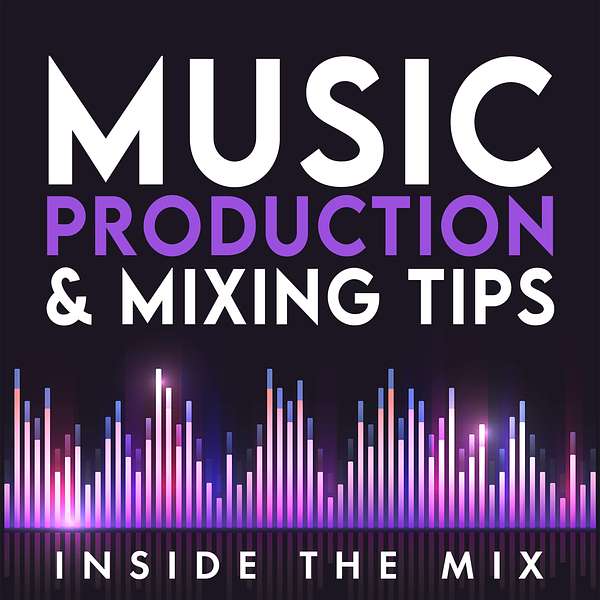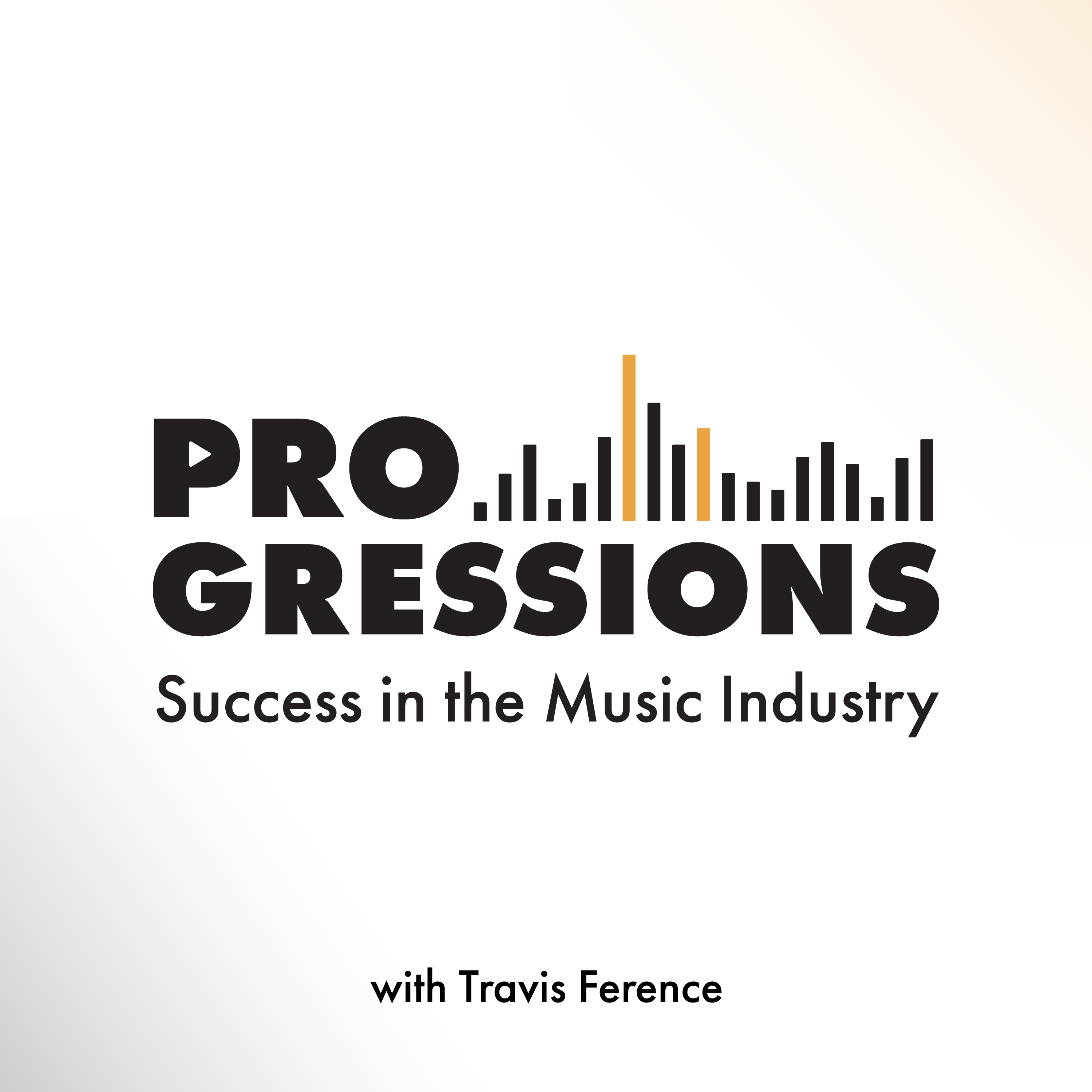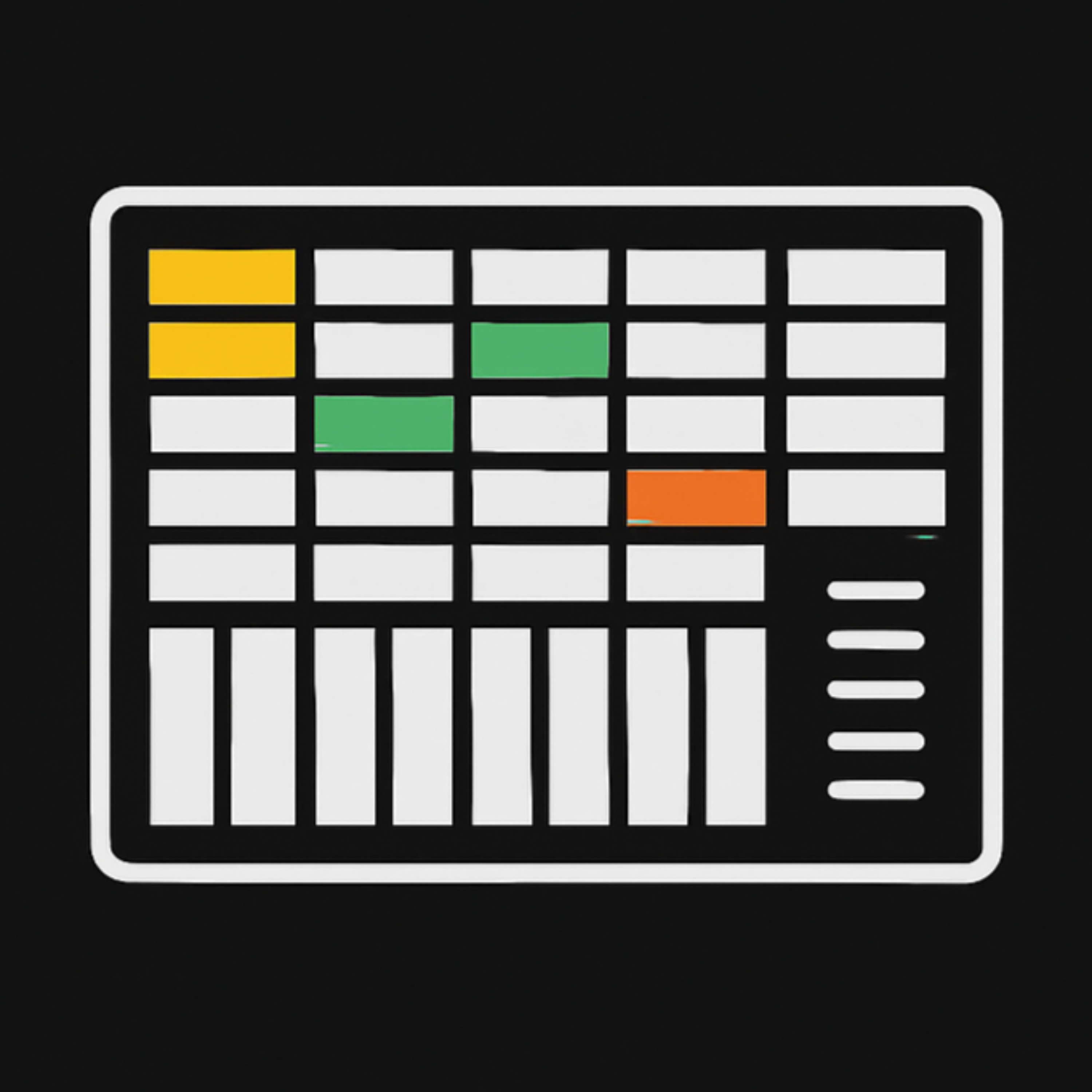
Music Production and Mixing Tips for Beginner Producers and Artists | Inside The Mix
If you're searching for answers on topics such as: How do I make my mixes sound professional? What equipment do I need to start producing music at home? What is the difference between mixing and mastering? What are some of your favourite production tools and techniques? How do I get my music noticed by record labels? Or what are the key elements of an effective music marketing strategy? Either way, you’re my kind of person, and there's something in this podcast for you!
I'm Marc Matthews, and I host the Inside The Mix Podcast. It's the ultimate serial podcast for music production and mixing enthusiasts. Say goodbye to generic interviews and tutorials, because I'm taking things to the next level. Join me as I feature listeners in round table music critiques and offer exclusive one-to-one coaching sessions to kickstart your music production and mixing journey. Prepare for cutting-edge music production tutorials and insightful interviews with Grammy Award-winning audio professionals like Dom Morley (Adele) and Mike Exeter (Black Sabbath). If you're passionate about music production and mixing like me, Inside The Mix is the podcast you can't afford to miss!
Start with this audience-favourite episode: #175: What's the Secret to Mixing Without Muddiness? Achieving Clarity and Dynamics in a Mix
Thanks for listening!
Music Production and Mixing Tips for Beginner Producers and Artists | Inside The Mix
#217: How to Use Reference Tracks to Finish Songs FASTER
Staring at a blank DAW is exhausting; staring at a mapped-out arrangement from a reference track is energising. Marc walks through a clear, repeatable reference track arrangement blueprint workflow that turns a single reference track into a full song structure, so you can stop looping and start finishing. From matching tempo and key to placing eight-bar markers, Marc shows how to label intros, verses, breakdowns, builds, and drops, then use that structure to guide creative choices without feeling boxed in.
Marc digs into why intelligent imitation is a craft skill, not a shortcut. By reverse-engineering the reference track structural DNA, you can learn pacing, contrast, and energy flow faster than via trial and error. He goes beyond markers to analyse macro dynamics, tonal balance, and how loudness shapes a listener’s journey. You’ll discover where spectrum shifts create space for vocals or bass, and how micro-changes sustain attention across long sections. With stem splitting from the reference, you learn drums, bass, and instruments in isolation and translate their function into your own sound.
The practical steps are simple: import your reference track, set BPM/key, add a one-bar buffer for alignment, then mark changes every eight bars. Use those signposts to automate builds, design drops, and maintain forward momentum. As your track evolves, reduce reliance on the reference and treat it as a launch pad, not a cage.
Marc closes with a challenge: pick a song that grabbed your ear, map its structure today, build your arrangement, and send him a work-in-progress. If this approach helps you move faster and think clearly, subscribe, share with someone stuck in loop-land, and leave a quick review to help more producers find the show.
Links mentioned in this episode:
Listen to Darklight
How to Make Progressive House from Start to Finish | Splice
Ways to connect with Marc:
Listener Feedback Survey - tell me what YOU want in 2026
Radio-ready mixes start here - get the FREE weekly tips
Book your FREE Music Breakthrough Strategy Call
Follow Marc's Socials:
Instagram | YouTube | Synth Music Mastering
Thanks for listening!!
Try Riverside for FREE
Ever stared at a blank door completely stuck on how to start a song? You are not alone, my friend, and in this episode, I'm going to show you a technique that uses a reference track to banish writer's block and kickstart your music production and songwriting no matter what door you use. You're listening to the Inside the Mix podcast with your host, Mark Matthews. Welcome to Inside the Mix, your go-to podcast for music creation and production. Whether you're crafting your first track or refining your mixing skills, join me each week for expert interviews, practical tutorials, and insights to help you level up your music and smash it in the music industry. Let's dive in. Hello, folks, and welcome to the Inside the Mix podcast. And a big welcome and hello if you are a new listener andor viewer on YouTube. Now, this episode is a response to some questions from episode, I'm looking at my notes here, 213 with John Kunkel. Finish tracks faster, workflow, hacks every producer needs. And in that the in that episode, rather, we go through or rather we discuss using reference tracks and mapping out a session using markers in a DAW to kick start the songwriting process. And I had a few messages concerning that um asking basically where can I find this video? Can you put a link in the episode description? So I thought, you know what, I'll go one better and just record a version of it myself. So this is an interpretation of John Grant's brilliant tutorial, spice tutorial on progressive house. And I've taken a segment of it, and the segment that I use in every production that I do now, and that is mapping out the structure of a song using a reference track. And that's what I'm going to show you in this episode. But before we do that, consider joining my YouTube membership for less than the price of a coffee per month. If you like what I'm doing here at the Inside the Mix podcast, you can join the YouTube membership and you'll gain access to benefits such as priority reply to comments, you'll get loyalty badges, you'll also get a shout-out on the podcast, and you'll get early access to Inside the Mix podcast episode. So that sounds like your sort of thing. Click the link in the episode description and I'll see you in there. So let's go through this process of mapping out the structure of a song. So in this example, I'm using one of my own songs purely so I don't get hit with a copyright strike by YouTube or Spotify. And I'm using my tune Dark Light. When you use this process, the idea is to reverse engineer maybe a chart topper or a really successful song in your chosen niche or genre, if you will. And you're going to reverse engineer it. And you're going to intelligently imitate. You're intelligently imitating. And you're sort of learning the structural DNA of what makes a successful song in that particular genre. We are creating a structural blueprint. So I've imported Dart like into Logic Pro and I've set the BPM of the track at 124 of the project, rather, which is the same BPM as the track. Because when I'm mapping it out, I want that BPM to be the same because it just makes mapping, aligning the bars a lot easier. And then when I've done that mapping, if I want to change the BPM, I can do that later. So in the first instance, I keep it as the same BPM as the song that I've imported. And I always give myself a one bar buffer. And what I do find it, but it gives me a bit of a headache when working out my maths, because I like to do in eight bars. So every eight bars I'll put a marker depending on what's happening there. So in this instance, it starts on bar two. Well, it kind of leads in, it fades in really at the beginning of this track. But in essence, in essence, it starts on bar two in this instance. So I'm going to press option apostrophe and add a marker, and I'm going to put intro. I like to do it in capitals for whatever reason. Not that I'm shouting intro at myself, but I suppose it could be. Then I'm going to play it through. And then when I get to bar 10, uh, which is eight bars, I'm going to put another marker. So let's play it. Okay, so this is bar 10. I'm going to get up. It's not exactly, I'm going to move the playhead. Uh, apostrophe, comma, and this is going to be intro two. The reason I do that every eight bars, and this goes back to when I was doing songwriting and stuff at uni, I like to add something new every eight bars just to keep the listener engaged and interested as much as possible. Or I might take stuff away. Don't always have to add, you can take stuff away as well. Night and day. So I'm going to play it for another eight bars. So we're going to get to bar 18, and then it should, if I remember rightly, it's my own song, go into verse one. There we go. So I'm going to press option, comma, and that's going to be verse one. Now, a little tip for you here, folks. If you want to quickly navigate between um markers in logic, you've got option comma and option period. And you can go back and forth left and right. So option, we've got to look beyond my microphone here. Option comma will go left, and option period will go right, and then it's option apostrophe to add a marker. A little tip for you there. Quite good. Uh so we'll play on now. Uh so we're at verse. So I'm gonna add another one here. I've lost my uh bearings. I'm gonna add another one here. I'm not gonna go through the whole track, I'm just gonna map it out into like the chorus. Uh, we'll go through the drop in the chorus just so you can get an idea of what you're gonna do here. And I think I might have put that in the wrong place. Uh I pressed the wrong button. There we are. And this is gonna be verse two. I like my capitals. I mean you can change the colours of these as well, make it easier to see. Uh so uh we are now at bar 26. Okay, so I put another marker here. I mean, and when it comes to the naming conventions, you can change these if you want. You might end up calling it build or something else. But the idea is you've got an idea you're giving yourself a structure. There we are. So I think we're approaching this. Is longer than I thought. Uh, we're approaching the drop, I believe. This might be the build. I might have to come back and re-rename this. I should know, it's my own track. I just remembered, I don't think there is a build in this one, so it goes on if I remember rightly. I've got it mixed up with another song. So I think I'm gonna put verse five here. I'm probably gonna need to rename these because uh I've just realized that there isn't a um a chorus in this. I think it goes into a drop. Let's continue playing it. I should know it's my own song. Yeah, so here we go. So there isn't a build. There will be a build out of this though. So what we'll call this, I'm gonna put call this, we'll call this breakdown. We're moving into a breakdown now, so I'm gonna call this breakdown one. We'll call this I supp I mean you could call that drop, I guess, but I'm gonna call it breakdown for now. I'm gonna call this one breakdown two. Yeah, bread break down two. I'm gonna call this build. So we're gonna move on to a build now. So I'm gonna call this build build one send a time. So let's call this build two. That is the drop. So that is drop one. And we'll put uh drop two there. Now I'm actually going through it all. I said I wasn't going to, but I'm doing this because I totally forgot the structure of the song. Sorry folks, I pressed the wrong key there and I opened up loads of other stuff that I didn't want in logic. And so where were we? Let's go find my bearings. Uh 98, yeah, I don't know quite what happened there. I pressed the wrong key. Uh drop three. This is the final one. This is gonna be outro two. I don't know why I just don't leave the capital one. It's false a habit to turn it off. Capitalization. And there we go. I said I wasn't gonna go through the whole thing, but I did um because I forgot the structure of my own song. But now when I zoom out, I can see I've got this nice structure. I've got intro one, intro two, verse one, two, three, four, five, breakdown, breakdown, build, build, drop, drop, drop, outro, outro. Now, the beauty of doing this as well is you've mapped this out. You could also use this to analyze the sort of macro dynamics and the microdynamics in the track. So, macrodynamics in particular, sort of like the the difference in loudness between sections and also the arrangement as well, and how it builds between sections. And this is what I do a lot when I'm referencing and analyzing other other songs, the instrumentation, the arrangement, and the flow between different sections, and how it's taking the listener on that journey throughout the song. So, this is a really good way of doing it, and you could also use this as a way of looking at the tonal balance of the song as well, and just uh again going back to the the macrodynamics, the loudness in in in particular sections. What I have done with this as well, and in logic, and other DAWs may have this now as well, but you can use the stem splitter. So you could do the stem splitter function and then even analyze it further and think, okay, I've broken it down into sections, and now I can use the stem splitter and really dig into the individual track groups themselves in in terms of what's going on in each section and use that as a launch pad for your uh productions yourself. Use the reference track as a launch pad, not as a cage, and personalize it to your particular taste. The idea is as you move through the production and the arrangement and yeah, basically the production of your track, you are going to gradually stop referencing the reference track's arrangement, if that makes sense. You might come back to it when it comes to mixing and mastering, but ultimately, the further you get into the creation of your own song, the less you'll be paying attention to the reference. That's the way I do it anyway. Uh others might say or see it differently. But to recap, the key is import your reference song, your reference track into your DAW, and then map out eight bars at a time, the sections throughout that song so you've got a full structure. I say eight bars, you can do four if you want, you can do sixteen, it's entirely up to you. But I do eight bars and it works for me. My challenge to you folks is this open your DAW, import a reference track, something that you've listened to recently that really has caught your ear. Top tip here. I have a Spotify, a private Spotify playlist where every time I hear a song that I'm thinking, ooh, I like that for whatever reason. I stick it in that playlist so I can come back to it later and potentially use it as a reference. I do have to go for a cull every now and again as my tastes do change over time. Anyway, back to my challenge. Pick a song, import it into your day into your door, your DAW, map out the structure, and then start working on that arrangement and start producing a track. And then send me a work in progress. Click the link in the episode description, send me a message with a link to your work in progress, and uh I'll give it a spin. And if you do finish a track, let me know, and I can give it a shout out on the podcast. Just hit that, send me a message link in the episode description. And until next time, stay inspired, keep creating, and don't be afraid to experiment inside the mix.
Podcasts we love
Check out these other fine podcasts recommended by us, not an algorithm.

Progressions: Success in the Music Industry
Travis Ference
Let's Talk Synth... Seriously!!
UAPretrosynth
The Savvy Producer | Productivity and Efficiency in Music Production
Marsden Mastering
Your Morning Coffee Podcast
Jay Gilbert & Mike Etchart
Recording Studio Rockstars
Lij Shaw
Master Your Mix Podcast
Mike Indovina
